What's New
Displaying results 3871 - 3880 of 4052
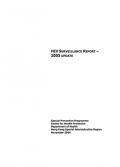
Resource | Publications,
Hong Kong, located in Asia the new burning place of HIV infection, is still having a relatively low prevalence of HIV infection. While sexual transmission is the predominant route of transmission in Hong Kong, an upsurge of infection in injecting drug users is a concern from the experience in other Asian localities. Various public health measures in Hong Kong have kept the HIV prevalence of drug users at low level, as compared with neighbouring cities.
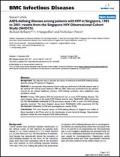
Resource | Publications,
The objective was to describe the causes of initial and overall AIDS-defining disease episodes among HIV patients in Singapore.
A retrospective observational cohort study was performed of all adult patients seen at the national HIV referral center between 1985 and 2001. Data were extracted from the patients' records by ten trained healthcare workers. AIDS-defining conditions were established using predefined criteria.
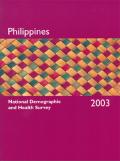
Resource | Publications,
The 2003 National Demographic and Health Survey (NDHS) is a nationally representative survey of 13,945 women age 15-49 and 5,009 men age 15-54. The main purpose of the 2003 NDHS is to provide policymakers and program managers with detailed information on fertility, family planning, childhood and adult mortality, maternal and child health, and knowledge and attitudes related to HIV/AIDS and other sexually transmitted infections.
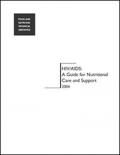
Resource | Guidelines,
This guide provides information for human immunodeficiency virus (HIV)/acquired immune deficiency syndrome (AIDS)-affected households and communities on how nutrition can help HIV-positive people live healthier lives throughout the progression of HIV disease. Malnutrition is a common complication of HIV infection and plays a significant and independent role in its morbidity and mortality. Malnutrition was one of the earliest complications of AIDS to be recognized and has been used to clinically diagnose AIDS.
The purpose of this guide is to assist program managers and health workers make recommendations on food management and nutritional issues for households with members who are HIV-infected or living with AIDS.
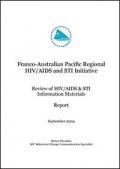
Franco-Australian Pacific Regional HIV/AIDS and STI Initiative: Review of HIV/AIDS & STI Information
Resource | Publications,
One of the most widespread approaches to behaviour change used in the battle against HIV/AIDS has been information, education and communication (IEC) campaigns focused on raising awareness about the virus and avoiding behaviours associated with increased risk. The basic intention of HIV/AIDS & STI information materials is to inform, inspire, and communicate with people to deepen their understanding and change their behaviour around the prevention, care and/or treatment of HIV/AIDS. These materials usually assume, explicitly or implicitly, that people can learn from written or visual information and then change their attitudes and behaviour.
A review of the HIV/AIDS & STI information material available in the Pacific region was undertaken to determine the range and quality of currently available IEC materials used in HIV prevention programs as well as assess the need to develop new materials. The review also provided complimentary data on training and capacity development needs (outside of IEC) for the Pacific Regional HIV/AIDS Initiative and other technical and regional agencies.
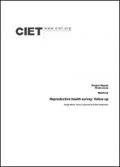
Resource | Publications,
The survey is a follow up to the baseline reproductive health survey of 1999. It provides information for evaluating the five-year Reproductive Health Programme of the Ministry of Health and the Department of Public Health as well as new information about adolescent sexual and reproductive health to guide future programmes aimed at youth. The survey was commissioned by the Ministry of Health and was carried out by the Health Information and Research Unit (HIRU) of the Ministry of Health with technical support from CIETinternational and funding and support from UNFPA Maldives.
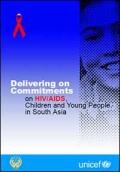
Resource | Publications,
South Asia stands out as the region with the second largest number of HIV infections in the world. HIV is now found in every country in South Asia. No longer can any society in the region consider itself immune to the virus.
The newest global HIV/AIDS estimates indicate there are more than 5.2 million people living with HIV and AIDS in South Asia. With almost one-quarter of the world's population, the region is now home to some of the world's fastest growing AIDS epidemics.
As the pandemic matures in South Asia, an emerging trend that demands our full attention is that of children living in families who are affected by HIV/AIDS or are orphaned by AIDS. The impact on a child of losing one or both parents to AIDS has been well documented around the world. These children are more likely to be impoverished, to miss out on educational opportunities, and are at greater risk of abuse, neglect, exploitation and discrimination. Though more research is required in South Asia, studies and experience suggest that children orphaned by AIDS in this region also have their basic rights violated or unfulfilled.
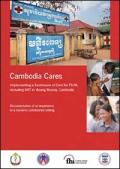
Resource | Publications,
Mr. Nun (a pseudonym) is one of many Cambodians who suffer from AIDS. What is unique about Mr. Nun is that his physical condition is better now than it was last year and that his improvement happened after receiving HIV care and treatment from a local hospital. Mr. Nun is the beneficiary of a new collaborative initiative in Moung Russey Operational District (OD) between the district health services, the National Center for HIV/AIDS, Dermatology and STD (NCHADS), communities, people living with HIV/AIDS (PLHA), and international and local non-government organizations. These partners have worked together to improve health services for PLHA by instituting a continuum of care (CoC) for HIV/AIDS clients that provides complementary health care services in both the hospital as well as in the clients’ homes.
In less than six months, with a strategic set of inputs, this partnership has implemented specially designed services in the Moung Russey Referral Hospital (RH) that prevent HIV infection, provide testing and counseling for suspected HIV cases, and make available diagnostic and treatment services for PLHA suffering from HIV-related illnesses such as opportunistic infections (OIs) and TB, including the provision of INH preventive therapy (IPT) for PLHA.
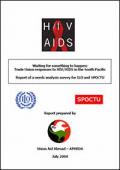
Resource | Publications,
Unions in South Pacific countries face many threats and in many instances have weak or fragile capacities and infrastructures. Programs that respond to the needs of members and non-union workers in relation to HIV and sexual health can assist in building unions as effective civil society (or “non-state”) actors.
Discrimination does not appear to be a major problem in most countries and has been resisted by unions when it has occurred. As cases grow, union policies will need to be in place to counter discrimination that will inevitably occur due to fear and ignorance. Issues of voluntary testing and confidentiality have not been widely debated or considered in most countries. Union leaders and their members need to be well informed and convinced of these key issues in order to protect the rights of workers and to counter demands for involuntary testing and keeping HIV status confidential.
Apart from Australia, New Zealand, and French territories, other South Pacific unions have yet to develop plans of actions to deal with HIV/AIDS. Unions require assistance to develop workplace policies and education programs in line with the ILO Code of Practice.
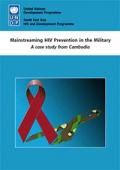
Resource | Publications,
In response to the HIV threat in the military, the Royal Cambodian Armed Forces, in partnership with local and international non-governmental organizations and international agencies, developed a comprehensive strategy for reducing HIV vulnerability in the military through education, empowerment and capacity-building as part of a larger national HIV prevention strategy.
This case study documents the Cambodian defence sector's effort in building HIV resilience and reflects both constraints as well as lessons learned on factors contributing to an effective HIV prevention programme in the military.





